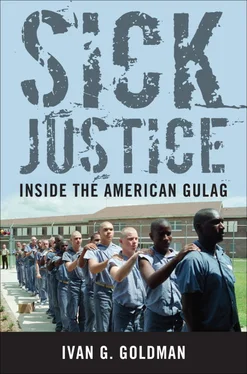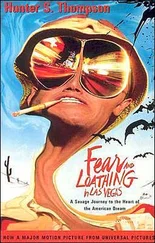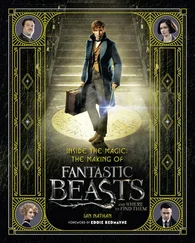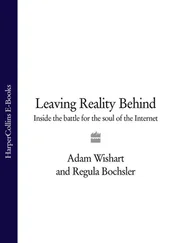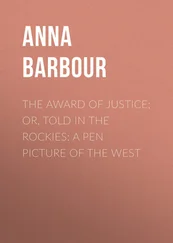Taylor was one of many thousands of troubled souls trudging up and down Los Angeles’s skid row in a journey to nowhere. Like so many of them, he had a history of mental illness and a drug addiction he’d picked up trying to self-medicate out on the street. His public defender argued unsuccessfully that what transpired that morning at the church property involved neither a crime nor a victim, but if a crime existed, it was trespassing, not burglary. Father McCoy spoke on the defendant’s behalf, but Taylor was convicted and sentenced under the three-strikes law.
Sentenced to twenty-five years to life, Taylor had at least twelve more years to serve in 2010 when two Stanford law students discovered an error in Superior Court Judge James Dunn’s instructions to the jury. Still, trying to free Taylor was tough sledding. The state fought to keep him, but eventually the Los Angeles district attorney stopped contesting the appeal, and Taylor won his freedom.
Taylor was forty-eight when he was freed at last by a judge who declared that his deprived, difficult boyhood; mental health problems; and mild personality placed him “outside the spirit of the three strikes law.” 4Taylor’s previous two strikes had been earned more than a decade before the fateful morning he tried to pry open the screen. They were for purse snatching and an unarmed, failed street robbery. While Gregory Taylor was locked up, his brother, Michael Taylor, motivated by Gregory’s travails, had become the manager of a food pantry in Pomona, California, and Gregory’s plan when he finally gained release was to help feed hungry folks.
After Taylor won his freedom the original prosecutor, Dale Cutler, said he still believed that “the facts strongly suggest that the motivation wasn’t for food” and that the defendant had been hoping to steal money or valuables, possibly “icons.” 5He insisted that anyone seeking only food would have waited an hour for the pantry to open, as though the mind of someone like Taylor was functioning with perfect logic and reason. So to Cutler the original sentence was justified. From his retirement perch, he objected to Taylor’s case having become what he pejoratively referred to as a cause célèbre.
Taylor won his freedom on a fluke. It was possible only because he had advocates who managed to find the judicial error. But in most cases, even when determined, competent attorneys take up the appeal, no such mistake can be found, so convicted defendants are serving out their terms no matter how great the distance between the sentence and genuine justice.
LIFE AND TIME
Most of us understand what it means to lose track of time. Time seems to move quicker when we’re thoroughly involved in some activity. But in case after case officials appear to lose their understanding of time’s value in relation to human life. That could explain why Assistant District Attorney Cutler and Superior Court Judge James Dunn agreed Taylor should serve a minimum of twenty-five years for his offense. It’s as though authorities lost their ability to assess how many days it takes for all those years to pass, how many times a man must rise from his prison bunk each morning to gaze into the mirror and search for signs of the inescapable aging that drained his life of another night. They never seem to wonder how it might affect Taylor to watch killers and child molesters enter the system and gain release while he remains behind.
Three-strikes laws regularly gain and lose force as courts interpret and reinterpret state laws. A federal appeals court in October 2010, for example, reinstated a rule that gave New York State judges the discretion to send nonviolent three-time losers to prison for fifteen to twenty-five years to life. 6Earlier rulings by lower courts had declared the law unconstitutional.
LIFE TERMS FOR MISDEMEANORS
The contemporary three-strikes concept first took hold in Washington State, where voters approved it in a 1993 initiative. 7Many states quickly followed Washington’s lead. Although three-strikes laws are best known for establishing life sentences for third-time offenders, they also create a simple way for courts to extend the sentence for any crime classified as a “strike.” In most places three-strikes laws apply to violent crimes only, but in California, which was America’s three-strikes capital from 1994 to 2012, the statute applied to “serious,” though not necessarily violent, offenses. What’s more, a third strike didn’t have to be “serious.” In some circumstances a misdemeanor could be upgraded to a felony, and the defendant could be imprisoned for life—or at least decades.
Three out of four inmates leaving state prisons were convicted of nonviolent crimes. 8Most of these former inmates were jailed for drug crimes, and the rest tend to have been convicted of “property” crimes, such as burglary or receiving stolen goods. The law can distinguish between violence and lack of violence in ways that one might not expect. Entering a residence with the intent to steal when residents are home, for example, presents a potential for violence that constitutes first-degree burglary, an offense that remains an automatic strike in California. Darting into an open garage at noon and grabbing a garden hose or a bicycle, is, according to the statute, no different than breaking into an inhabited bedroom at 3:00 a.m. Running into two garages on the same street within a minute of each other can earn an offender two felony counts and two strikes. These interpretations of the law give an ambitious prosecutor a heavy club when the defense looks to strike a deal. 9
Any burglary below first degree is what lawyers call a “wobbler.” It could constitute either a misdemeanor or a felony. Prosecutors filing for first degree can just lean back and wait; unlike an overwhelming majority of defendants, they don’t have to sleep in a cell with their head next to a toilet while the case works its way through the court. Meanwhile, defense attorneys often represent clients who may have committed a crime, but that crime is not necessarily the one they are charged with, thanks to loose and varied interpretations of the law.
In 1947, when Vittorio De Sica made his landmark film The Bicycle Thief , he’d never have guessed that his American liberators would corral their own underclass in an environment as unforgiving as the one he showed us in desperately poor postwar Italy. Welcome to the nightmare of Chris Martinez, the unemployed construction worker I mentioned in chapter 1. 10Martinez wheeled a beat-up, rusted bicycle with a broken chain and two flat tires out of an open garage in Manhattan Beach, California, and abandoned it after the owner, standing on a balcony, called out to him. It started out as a stupid prank but ended up as a definable crime. A small-time offender arrested by police later in connection with an unrelated incident sought a better deal for himself by identifying Martinez as a bicycle thief.
The prosecutor offered Martinez, then twenty-four, a sentence of nine years and four months, “and the public defender said it was a good deal I should sign,” Martinez recalled. “At that point my maximum amount of time was twenty years.” A lawyer friend of the family took over and bargained the deal down to six years, with a minimum of three and a half to be served. Martinez accepted. You might say he got lucky—if you think doing three and a half years in prison for almost stealing a twenty-dollar bicycle is lucky. Did anyone viewing De Sica’s movie imagine that his Italian bicycle thief would end up serving such an irrational sentence? Probably not.
Martinez’s bicycle sentence came courtesy of the three-strikes law, and with it came a second strike. If he were arrested for a third nonviolent offense today, after the passage of the Proposition 36 reform measure, he could still receive a much harsher-than-ordinary sentence—perhaps life. His first strike was also for a residential burglary. The prosecutor on that case agreed to release him with time served (two months in county jail) if he accepted the strike on his record in exchange. To a defendant in county jail, that can seem like a good deal, but down the road it may start to feel like a payday loan carrying enormous interest. “I have no record of violence,” Martinez pointed out. “Matter of fact, I’ve never been arrested for anything of the sort. Somehow I’m one strike away from a life sentence.”
Читать дальше
